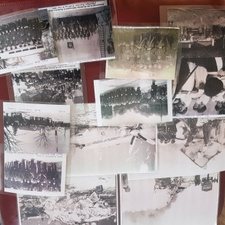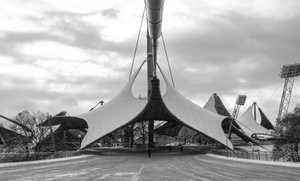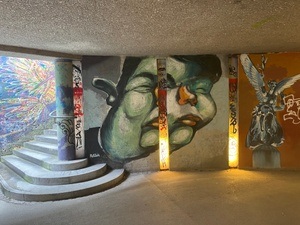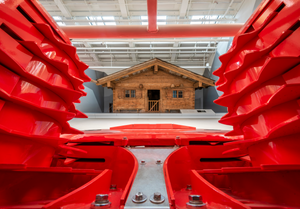Der Blaue Reiter
In the organizer's words:
After an agitated discussion that almost degenerated into fisticuffs, Wassily Kandinsky, Franz Marc and Gabriele Münter declared their resignation from the Neue Künstlervereinigung München on December 2, 1911. Only two weeks after the eclat, they and their comrades-in-arms set up a counter-exhibition at the Thannhauser Gallery in Munich. In addition to their own works, they showed works by August Macke, Robert Delaunay, Elisabeth Epstein, Albert Bloch, David and Wladimir Burljuk, Heinrich Campendonk, Arnold Schönberg and Henri Rousseau. The title "Die Erste Ausstellung der Redaktion Der Blaue Reiter" (The First Exhibition of the Editorial Board of Der Blaue Reiter) explicitly referred to the intention of the almanac: this programmatic yearbook established Der Blaue Reiter as a circle of artists who saw themselves as part of a worldwide artistic creation that transcended epochs and genres.
"The whole work, called art, knows no borders and peoples, but humanity." This is how Kandinsky and Marc formulated it in their 1912 almanac "Der Blaue Reiter," a credo that inspired the Lenbachhaus to create a new presentation that embeds the work of the Blaue Reiter artists* in the context of the art and cultural history narrative illustrated in the almanac. For the first time, the exhibition allows visitors to concretely trace the connections between Bavarian and Russian folk art, Japanese woodcuts, children's drawings, contemporary music, and the works from Bali, Gabon, Oceania, Sri Lanka, Mexico, and Egypt depicted in the Almanac. The dialogue between important loans and the familiar images of the collection opens up new perspectives on the self-image of the Blaue Reiter.
An exhibition in cooperation with the Gabriele Münter- und Johannes Eichner-Stiftung, Munich
This content has been machine translated.












